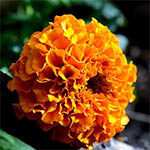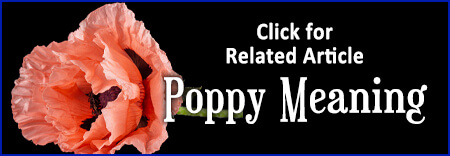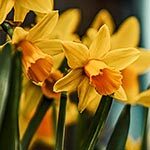
Bluebell Flower Meaning
Stories of Fairies, Witches & Dreams
Bluebell flower meaning includes humility and gratitude. Many flowers that grow close to the ground mean humility. Bluebell flowers also mean constancy and everlasting love.
Table of Contents
Share this page with a friend!
Bluebells and the Supernatural
However, the most fascinating bluebell flower meanings are closely linked to the realm of fairies and the supernatural. In addition, bluebells have unusual historical uses including glue, starch and snake bite remedies.
Watch nearly 300 videos on our YouTube channel!
Fairies and Bluebell Flower Meaning
Bluebells are sometimes referred to as “fairy thimbles.” For example, to call fairies to a convention, a bluebell is be rung. In traditional lore, fairies cast spells on those who dared to pick or damage the beautiful, delicate flowers. This led to another name for bluebells: Dead Man’s bells.
How Fairies Use Bluebells
Bluebells are sometimes referred to as “fairy thimbles.” For example, to call fairies to a convention, a bluebell is be rung. In traditional lore, fairies cast spells on those who dared to pick or damage the beautiful, delicate flowers.
Bluebells and Ancient Forests
The fairy lore of bluebells is partially due to their presence in ancient forests. Some of these forests go back to the 1600s. The mysterious feel of these ancient forests lend themselves to magical lore. In modern times we often think of fairies as delightful, butterfly-like creatures. However, they have not always been viewed in a positive light.
Fairy Personalities
Fairies have historically been viewed as mischievous. Like leprechauns, fairies (also known as pixies) would play jokes on the unwary. For the forest sojourner, the sight and smell of a forest carpeted with bluebells could lead to a type of trance-like intoxication. The pixies might lead the unfortunate traveler in circles until someone came to find them. A child thus led might never be found again.

Blue Bell Flowers and Magic
Bluebells are sometimes confused with a different flower known as a harebell in Scotland. That name derives from the hares that frequent fields covered with flowers. Some sources claim that witches turn themselves into hares to hide among the flowers. As a result, other names for harebells include Witch’s Thimble and Witch’s Bells.
Blue Bells or Hare Bells?
According to a Scottish source: “Harebells grow in fields and grassy areas whereas bluebells grow in the woods. Harebells also bloom later in the summer and bluebells come out in the spring – in Scotland usually early May.”
Blue Bell Magic Properties
In terms of the magic of bluebells, the flowers can be placed in one’s pillowcase or dried and hung near the bedside. Bluebells can be used in love spells by turning the petals inside out to ensure the return of your affections. In addition, placing a wreath of bluebells around someone’s neck is purported to compel them to speak only the truth.
Protecting Blue Bell Flowers
In some parts of Scotland, bluebells are called Aul (Old) Man’s Bells. The Old Man is a name sometimes given to the devil. For this reason, no one would risk disturbing the flower! To do so could lead to very bad luck. The people of Scotland are fond enough of bluebells to continue these traditions in the hopes of protecting the little flower.
Related Flower Articles
Bluebell Folklore in Britain
In British folklore, a person wearing a garland of bluebells must tell the truth. Additionally, if a person can turn a bluebell flower inside out without tearing the petals, they will win the one they love.
Bluebells in British Forests
A favorite flower around the world for many centuries, the bluebell is a particularly beloved flower in Britain. Almost half of the world’s bluebells grow in the UK. Bluebells create profuse carpets in older British forests.
Bluebell Habitat
To grow well, bluebells need both sun and humidity. Thus, they may be found more often on the edge of a forest rather than deep in the heart of the forest.
Click to explore a related article on this website!
Bluebell Flower Color Symbolism
Although bluebells are almost always blue, there are white and pink varieties. These occur as natural mutations. Bluebells have also been propagated to introduce new colors. Learn about bluebell flower color meanings below including blue, white, purple and pink.
Meaning of Bluebell Color
Bluebells that are a blue color, of course, are the most common bluebell flower! Blue flowers have highly positive meanings. In the natural world, blue is connected to water and the sky. Water is the source of life. In addition, blue skies mean optimism and possibilities. Accordingly, the color blue means freedom, strength and new beginnings.
Blue Flower Meaning
Blue flowers are relatively rare. Therefore, they are highly prized. Blue is calming and cooling. Blue is related to both strength and peace. Blue flowers include bluebells, irises, asters, hyacinths, periwinkles, delphiniums, bachelor buttons, forget-me-nots and morning glories.
White Bluebell Symbolism
White bluebells symbolize purity, contemplation and innocence. Many night-flowering plants are white, symbolizing the feminine energies of the moon. Yellow and white are colors related to inner illumination and spirituality.
White Flowers in Gardens
White bluebells are perfect for busy, profuse gardens where the viewer may need respite from multicolored blossoms. White is also the color of protection, peace and calm. In some cultures white means death. In any case, white is generally associated with heaven and the afterlife.
Purple Bluebell Meaning
Purple bluebells are symbols of forgiveness, apologies and moving forward. Purple and violet colors soothe the mind and nerves. Some color psychologists say purple helps to relieve tension and dissipate anger and violence.
Psychology of Purple Flowers
Violet and purple represent the qualities of transformation, transmutation and the balance of power and love. Additional meanings include charisma, charm, magical abilities and tolerance.
Pink Bluebell Meaning
Pink bluebells symbolize love and healing from grief, anxiety or emotional trauma. Pink is related to warmth, gentleness, beauty, and an outward orientation. Pink is associated with love, femininity, romance and baby girls. Pink flowers include bluebells, chrysanthemums, irises, daylilies, camellias, azaleas, carnations, peonies and dahlias.

Bluebell Petal Shape Meaning
Flowers with a bell-shaped petals are generally viewed as announcing or bringing a message to the viewer. A bell shape is reminiscent of a trumpet or horn. In the case of bluebells, the message is usually positive and encouraging (like the joy of a blue sky or beautiful blue ocean).
Botany of Bluebells
Bluebells have six petals with a simple and clear shape. The peak blossoming season for bluebells is only about three weeks long. Bluebell flowers open quickly and fade quickly. Bluebells create a sudden splash of color.
Bluebell Spiritual Significance
Other flowers unfold from the middle gradually. They may have multiple petals such as a rose or chrysanthemum. These flower symbolize the value of patience. They often have spiritual significance since the process of spiritual development is a long-term endeavor.
Flower-Related Video Shorts
Watch nearly 300 videos on our YouTube channel!
Bluebell Meaning in Greek Mythology
In Greek mythology, the Spartan prince Hyacinthus died an accidental and tragic death. In one version of the story, the sun god Apollo was attempting to teach him to throw the discus. The discus hit Hyacinthus on the head and killed him. Other versions of the story claim that Hyacinthus died as a result of his own mistake during a competition.
Apollo and Hyacinth Flowers
In any case, the sun god Apollo is grieved and cries over a flower. His tears form the letters AIAI meaning “alas” on the petals. These letters mark the flower which is appropriately named after Hyacinthus. The legendary marks distinguish the hyacinth from the unmarked bluebell. The hyacinth is Hyacinthus orientalis and bluebells are Hyacinthoides non-scripta.
Bluebell Flowers in Nature
Types of Poisonous Bluebells
English and Spanish bluebells literally mean death if eaten. All parts of the plant are poisonous. Eating these bluebells will cause vomiting, diarrhea and heart rate decrease. On the other hand, Mountain bluebells are an edible variety that grow in the western United States on stream banks. The flowers can be eaten raw and the leaves can be eaten raw or cooked.
Distribution of Bluebells
Mountain Bluebells grow in wet meadows, damp thickets, moist woodlands, floodplains and foothills in the western United States. The areas where bluebells grow in the United States include Montana, Colorado, New Mexico, Idaho, California and Oregon.
Bluebell Flowers in Gardens
Bluebells are easy to grow. They can handle both sun and shade. They even thrive in neglected gardens. Bluebells are grown from bulbs which can handle both frost and hot temperatures. They have delicate flowers that hang from a central stem. Bluebells also feature narrow leaves in light to medium green.
Bluebells and Butterflies
Many butterflies leaving winter hibernation are fans of the bluebell’s nectar. The flowers reproduce by creating smaller off set bulbs as well as seeds. Bluebells also grow in pots, tubs and urns. Most bluebells flower early in the year, usually from April through June.

Bluebell Flowers in Ancient Forests
Another bluebell flower meaning is directly connected to nature. Bluebells grow profusely in undisturbed areas. As a species, they can be viewed as a sign that a forest has been around for a long time. In fact, bluebells are an Ancient Woodland Indicator (AWI) along with lichen and animal species including slugs and snails.
Hundreds of Years in the Forest
A forest with abundant bluebells may have been growing continuously for hundreds of years. Some forests featuring bluebells can be dated back to 1600AD. Bluebells tend to grow in forests with sycamores, beeches and oak trees. They seem to have a preference for pointing south. In a group of bluebells, the flowers are likely to all be pointing the same direction.
Bluebells in Herbal Medicine
Mountain bluebells also have medicinal uses. For example, the Cheyenne Indians used Mountain bluebells medicinally. They used an infusion of leaves for smallpox and measles. After childbirth women took an infusion of the whole plant to increase milk flow.
Traditional Bluebell Uses
Powdered roots were used for itching from smallpox. In England, bluebells were used in folk medicine as a diuretic to reduce water retention or as a styptic to check bleeding from a wound. Other traditional uses included snake bite remedies.
Bluebell Flower Distribution
Bluebells are found in North America, Western Europe and North Africa. In some areas they are referred to as wild hyacinths. In addition to old forests (discussed above), bluebells also grow in grasslands, mountainsides, along the ocean and in brush areas.
Protecting Wild Bluebells
Bluebells were introduced as garden plants in the late 17th century. Since 1998, it has been illegal in England for anyone to collect wild bluebells for sale. This is an attempt to preserve the wild species. Garden bluebells are undergoing extensive hybridization. Bluebells are members of the lily family and are native to Portugal and Spain.
Bluebells in Popular Culture
Bluebells permeate modern culture in dozens of ways including dream interpretation, tattoos, gifts, artwork, poetry and song. Explore these fascinating meanings of bluebells in the sections below.
Bluebell Flower Meaning in Dreams
Bluebell flower meaning in dreams combines the symbolism of humility with gratitude. Bluebells in a dream indicate that you are grateful for all that you have in life. Walking through a field of bluebell flowers in a dream is a positive experience. However, if the bluebells are dark blue, they can mean sadness.
Positive Bluebells in Dreams
Bluebells also carry the connotation that others are looking out for you and that you are doing the same for others in your waking life. In this way, bluebells have positive connotations in terms of human relationships. To care for others is another characteristic of humility. An arrogant person might not consider how others are feeling in a social situation.

Shakespeare and Bluebell Symbolism
The beloved bluebell flower has inspired poets, playwrights and composers for centuries. The many bluebells varieties, their striking bell-shaped flowers and their presence in ancient forests add to the mystique of the humble little bluebell flower.
Symbols in Shakespeare’s Final Plays
The play Cymbeline is thought to be one of Shakespeare’s final plays. The storyline involves deceit, seduction, and forgiveness. The play is loosely based on the historic Celtic king Cunobeline. In Cymbeline, Act IV, Scene 2, the character Arviragus exclaims:
Whilst summer lasts and I live here, Fidele,
I’ll sweeten thy sad grave: thou shalt not lack
Unusual Bluebell Flower Uses
Aside from the medical uses noted above, the starch from the bulb of a bluebell could be used as glue for attaching feathers to the shaft of an arrow. The glue from bluebells has also been used for binding the cover on a book. Historically, the starch was also used as a laundry aid to stiffen the ruffs on sleeves. Ruffs were worn by both men and women from the mid-16th century into the 17th century.

Bluebell Flowers and Tattoos
Bluebell tattoos generally mean gratitude. If the tattoo is paired with someone’s name, the tattoo can mean everlasting love. In ancient cultures, flowers often had religious meaning. In the modern world, flowers more often represent romantic love.
Tattoos as an Art Form
Flower tattoos can also represent a geographic connection. For example, cherry blossoms are associated with Japan and poppies with California. Flowers may also bring to mind a beloved relative or a favorite song. An historical use of tattoos was to mark convicts or slaves. Those were the dark days of tattoos. In more recent times, tattoos have become an artform that helps to express individuality.
Bluebell Flower Themed Gifts
Bluebell themed gifts are perfect for anyone with a birthday in April or May since this is when they typically bloom. The tiny flowers of bluebells also make bluebell themed gifts perfect for baby showers and new babies. The cheerfulness of bluebells make images of this delicate flower appropriate for many different rooms and situations. Guest rooms, bathrooms, offices and children’s rooms are great places for bluebell themed gifts and artwork.
Bluebell Flowers in Poetry and Song
Bluebells
Patrick Wolf
But I’m going nowhere fast
A darker day has hold at last
Deep in a dream
I set the compass keep spinning
And your love has come too late
And I wave to the garden gate
Wake me up
when the bluebells are ringing
More about Patrick Wolf
Bluebells of Scotland
Scottish Folksong
O where and O where
does your highland laddie dwell
O where and O where
does your highland laddie dwell
He dwells in merry Scotland
where the bluebells sweetly smell
And all in my heart
I love my laddie well
More about Bluebells of Scotland
Bluebells
C.M. Johnson
Gliding through the fog,
She comes to the clearing,
Bluebells, Bluebells everywhere,
Violets and bluebells,
You can almost hear them ringing,
Ding-a-ling, Ding-a-ling,
The breeze whistles through,
The newly sprouting trees and seedlings…
More at Hello Poetry
The Bluebell
Anne Bronte (1820-1849)
A fine and subtle spirit dwells
In every little flower,
Each one its own sweet feeling breathes
With more or less of power.
There is a silent eloquence
In every wild bluebell
That fills my softened heart with bliss
That words could never tell.
More about Anne Bronte
Bluebell Time
Fay Slimm
Million bells waving bright bonnets of blue
Flaunting tall ranks of incredible hue.
Groundbreaking columns of stalks fill the shade
Assailing our senses from every dull glade.
Mid dapple-dim woods we tred without sound
Breathtaking armies of blue all around.
Sun shedding Spring over cold woodland dew,
Highlighting patches of mystical blue….
The Twelfth of Never
Jerry Livingston
I’ll love you ’til the bluebells
Forget to bloom
I’ll love you ’til the clover
Has lost it’s perfume
And I’ll love you ’til the poets
Run out of rhyme
Until the Twelfth of Never
And that’s a long, long time
Interesting Facts About Bluebells
- Ants help to spread bluebell seeds from the wild into gardens and domesticated settings.
- A bluebell seed will grow for several years before it forms a bulb.
- Specific species of moths and the skipper butterfly rely on bluebells for their food (nectar).
- Bees puncture the top of a bluebell flower to access the nectar.
More Flower Articles
BLUEBELL FLOWER ARTICLE SUMMARY
This article looks at bluebell flower meaning from multiple perspectives. One perspective is the folklore and history of bluebell flower meaning. Another perspective is the biological role of bluebells and their medicinal uses. Additional perspectives include bluebell flower meaning in culture, mythology and modern applications including tattoos and bluebell themed gifts.
Author Kathleen Karlsen
Kathleen Karlsen is a musician, artist, writer and speaker. She is the author of two books (Flower Symbols and Vocal Medicine) and over 200 articles. Kathleen, her husband Andrew, and their five children live in Bozeman, Montana. More about Kathleen Karlsen.















